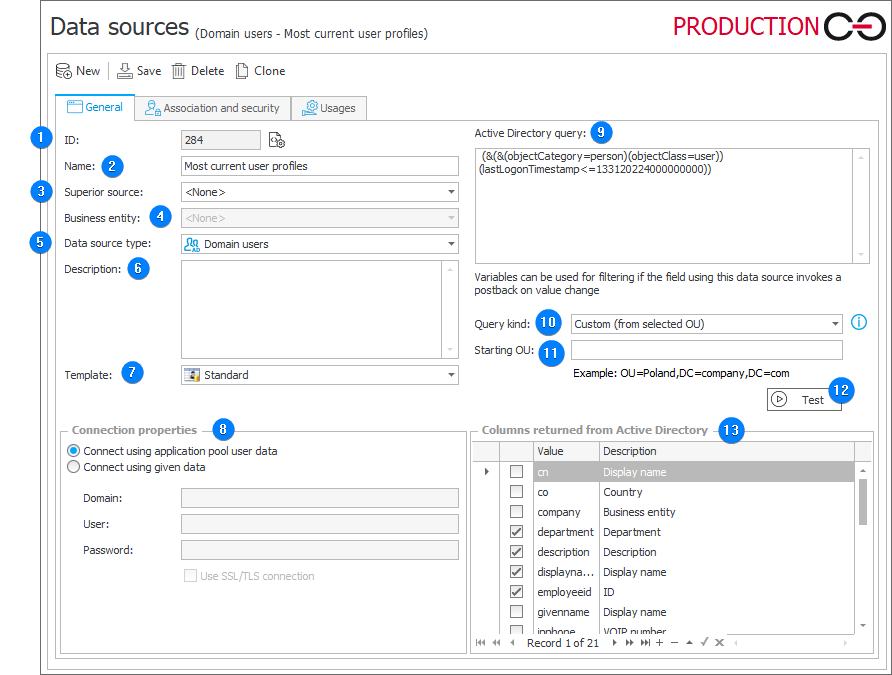Domain users
The data source allows you to retrieve Active Directory users’ profile data. You can use one of the existing query types or create your own query. The configuration also enables you to determine the starting OU (Organizational Unit) within which the query will be executed and select columns returned by the source.

1. ID
The data source identifier (if the value is smaller than "0", the source has not been saved in the database yet).
2. Name
Name of the data source entered by the user.
3. Superior source
Each data source can contain subordinate sources which are related to a company within the system. If a superior source is referenced from a workflow instance which belongs to a specific company, and that company has a subordinate source associated with it, the query will reference this subordinate source instead. If a superior source has been defined for the source, you need to enter the name of the company for which it is defined.
4. Business entity
A business entity to which the defined source belongs. If the source has a defined business entity, entering the superior source is required.
5. Data source type
The type of the current data source. The field specifies the location from which data is retrieved.
6. Description
Description of the data source defined by the user.
7. Template
Selection of the data source template results in the data source returning column types specified for the given template.
Information about required columns can be found in the context help of every data source template (after choosing a template that is different than the default one, a context help icon appears next to the menu).
8. Connection properties
The section allows you to configure the connection with the data that is different than the one used by the application pool.
9. Active Directory query
A query executed within the Active Directory service and the starting OU (Organizational Unit) that returns data source records.
10. Query kind
For the Active Directory source type there are several available predefined queries:
- All users (from selected OU) – all users from selected Organizational Unit or Container;
- Current user all subordinates – subordinates of the current user, subordinates of subordinates, etc.;
- Current user all subordinates (include user) – subordinates of the current user, subordinates of subordinates, etc., and the current user;
- Current user direct subordinates;
- Current user direct subordinates (include user) – direct subordinates of the current user and the current user;
- Current user managers – the current user manager, manager of manager, etc.;
- Custom (from selected OU) – users for which the conditions specified in the Active Directory query are met. Users will be searched in the selected Organizational Unit or Container.
11. Starting OU
The field allows you to restrict the query to the selected organizational unit.
12. Test
The button executes a data source test. A query is executed and test results are returned. When an error occurs, a message is displayed.
13. Columns returned from Active Directory
A list of columns returned as a result of querying the Active Directory service. You can add a new column, but it is necessary to return a profile property that was not enlisted on the list of returned columns.